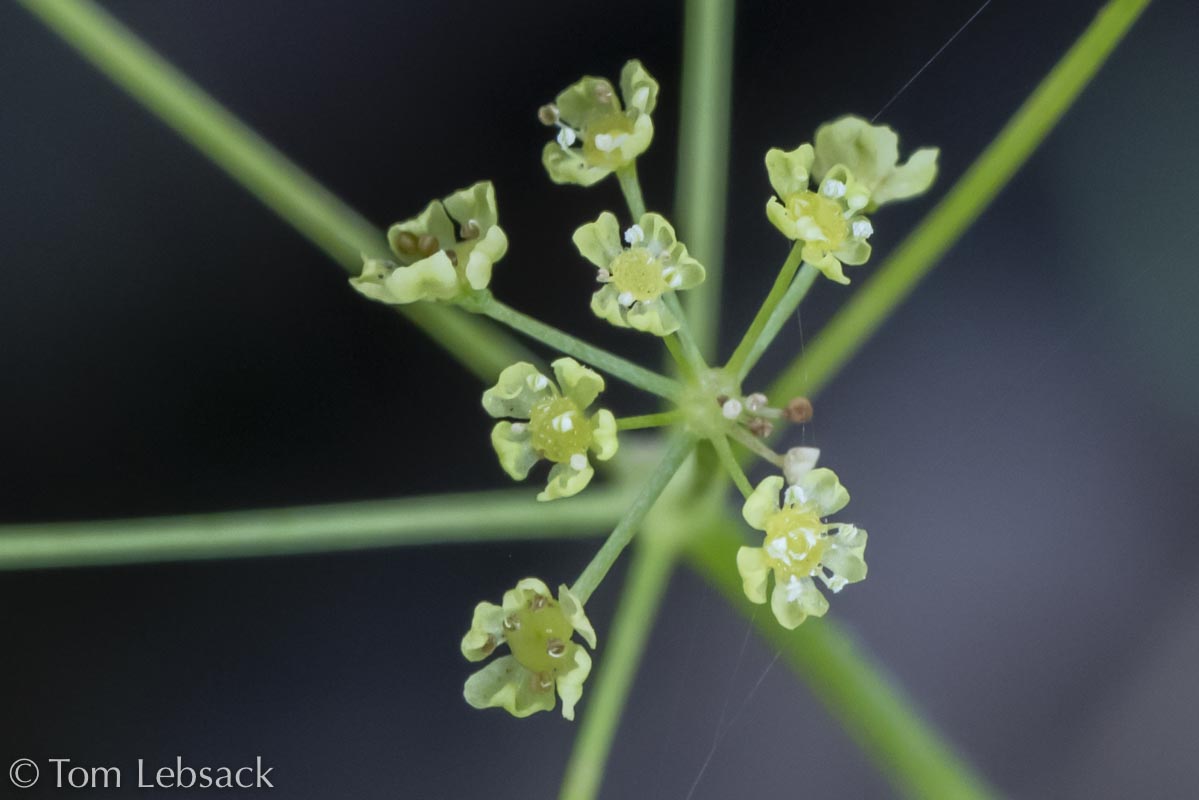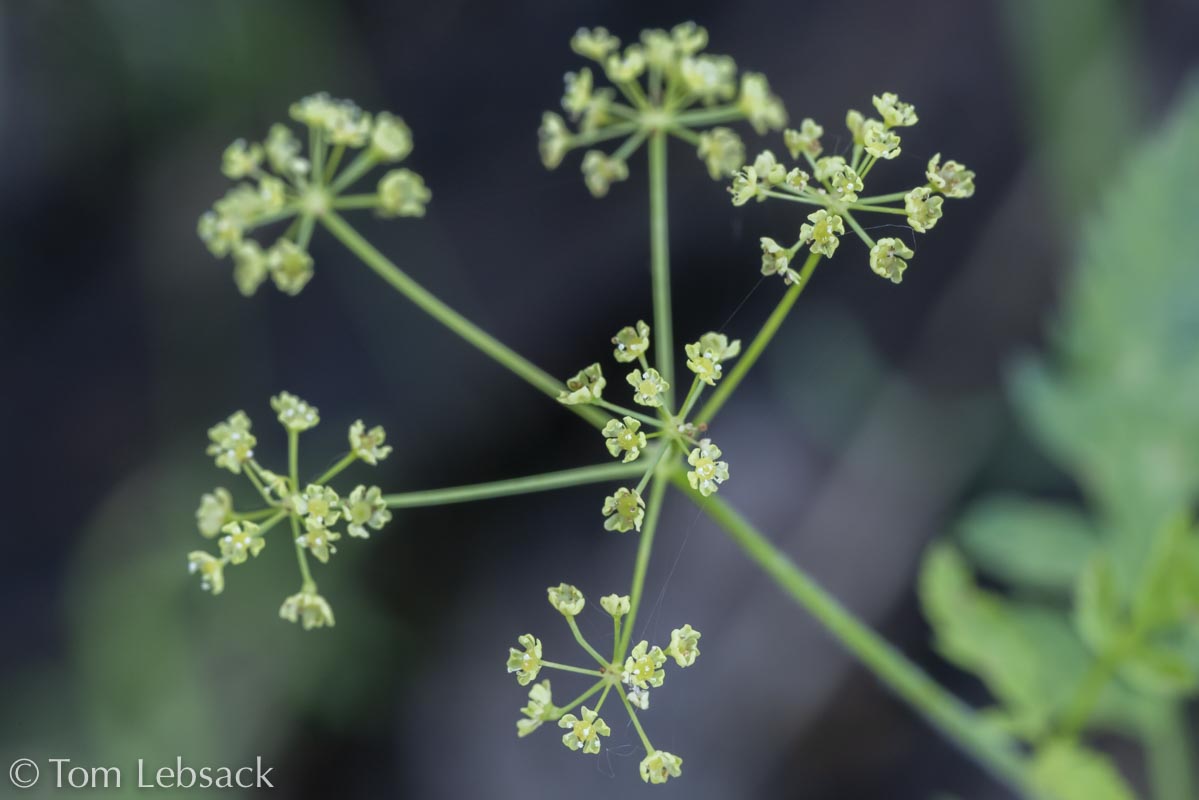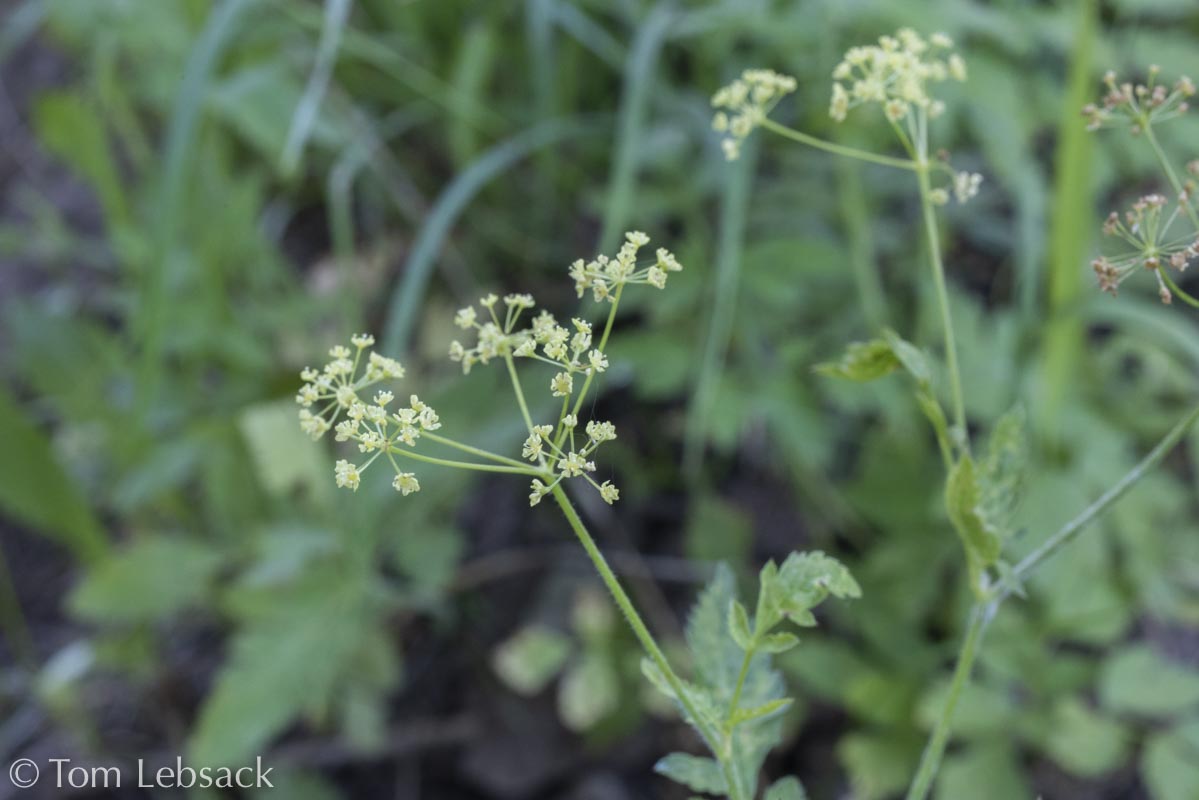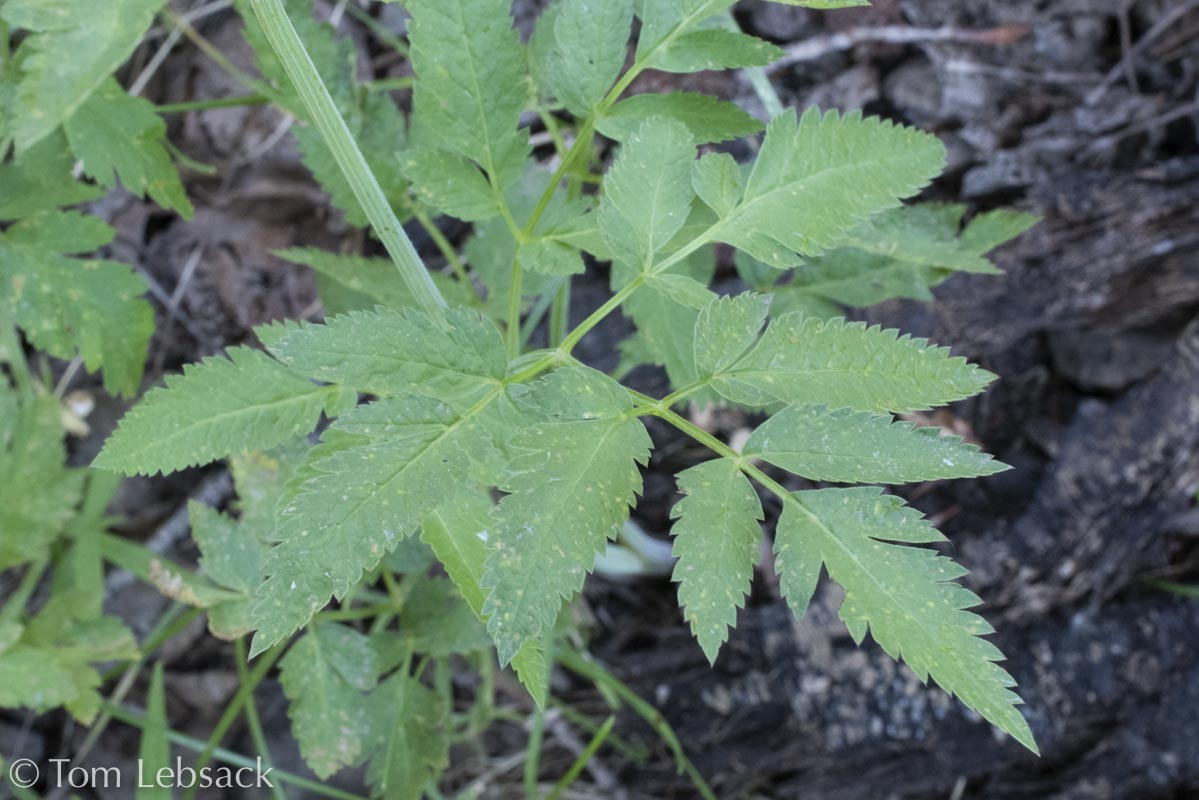(Western Sweetroot)
| Scientific Name | Osmorhiza occidentalis | USDA PLANTS Symbol | OSOC |
| Common Name | Western Sweetroot, Western Sweet-cicely | ITIS Taxonomic Serial No. | 29792 |
| Family | Apiaceae (Parsley) | SEINet Reference |
Click Here |
| Description |
Life zones and habitat: Foothills to subalpine (6000 to 11000 ft). Moist areas in open meadows and woods. Plant: Stout, mostly smooth, aromatic perennial, 16 to 48 inches tall. Leaves: Bi-ternate to bi-pinnate compound leaves, blades 4 to 8 inches long overall; leaflets lanceolate-oblong to ovate 3/4 to 4 inches long, margins serrate and irregularly cut or lobed; petioles 2 to 10 inches long. Inflorescence: Very small flowers in umbels on peduncles 2-3/8 to 8 inches long; umbels with 5 to 12 rays that are 3/4 to 2-3/4 inches long; easily-overlooked tiny blossoms about 1/16-inch across with 5 rounded yellowish-gteen petals, 5 stamens and greenish style in the center. Bloom Period: May to August. References: "Flora of Colorado" by Jennifer Ackerfield, Burke Herbarium and Jepsen Herbarium. |
BONAP Distribution Map
Map Color Key |
Colorado Status: Native |
© Tom Lebsack 2025
Banner photo: Castilleja rhexifolia and a brewing storm over the San Juan Mountains
I try to provide accurate, up-to-date, and relevant information, but cannot guarantee the completeness or accuracy of any information presented on this website. I use authoritative references to insure high standards of accuracy and review and update the information frequently.



